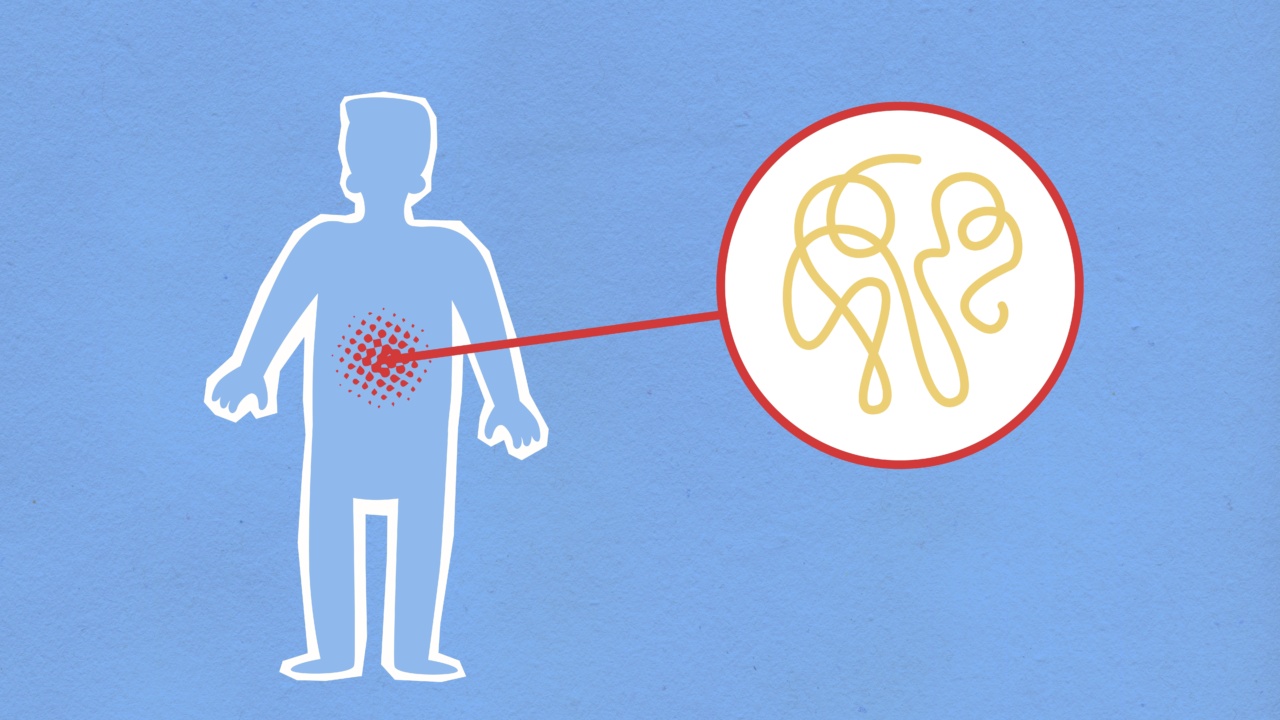Stomach pain can be the result of several factors, ranging from temporary discomfort to severe health conditions. It is necessary to pay attention to the symptoms and the location of pain to identify its cause and take steps accordingly.
In this article, we discuss the common causes of stomach pain based on the location of discomfort.
Upper Abdominal Pain
1. Indigestion: Indigestion refers to pain or discomfort in the upper abdomen that often occurs after eating. The symptoms include bloating, nausea, and heartburn.
Indigestion can occur due to issues with the stomach lining, overeating, or consuming spicy or fatty foods. Eating slowly, avoiding large meals, and avoiding trigger foods can help alleviate indigestion.
2. Gastritis: Gastritis occurs when the stomach lining becomes inflamed. The symptoms include pain in the upper abdomen, nausea, and loss of appetite.
Gastritis can occur due to bacterial infections, alcohol consumption, stress, and the use of nonsteroidal anti-inflammatory drugs (NSAIDs). Treatment for gastritis depends on the cause, but it can include antibiotics, acid-reducing medications, and avoiding trigger foods.
3. Peptic Ulcers: Peptic ulcers occur when there is a break in the lining of the stomach or duodenum (the first part of the small intestine). The symptoms include burning pain in the upper abdomen, nausea, and bloating.
Peptic ulcers can occur due to bacterial infections or long-term use of NSAIDs. Treatment for peptic ulcers includes antibiotics and acid-reducing medications.
Lower Abdominal Pain
1. Appendicitis: Appendicitis is a severe condition that occurs when the appendix becomes inflamed. The symptoms include pain in the lower right abdomen, nausea, and fever.
Appendicitis requires immediate medical attention and may require surgery.
2. Irritable Bowel Syndrome (IBS): IBS is a common digestive disorder that can cause abdominal pain, bloating, and changes in bowel movements.
The symptoms can vary from mild to severe and can be triggered by stress, certain foods, or hormonal changes. Treatment for IBS includes dietary changes, medication, and stress management techniques.
3. Constipation: Constipation can cause pain in the lower abdomen, bloating, and discomfort. It can occur due to a lack of fiber in the diet, dehydration, or lifestyle habits.
Treatment for constipation includes increasing fiber intake, drinking water, and exercise.
Right Side Abdominal Pain
1. Gallstones: Gallstones are hard deposits that form in the gallbladder. The symptoms include pain in the upper right abdomen, back pain, and nausea. Gallstones can occur due to high cholesterol levels, obesity, or rapid weight loss.
Treatment for gallstones can include medication, dietary changes, or surgery.
2. Kidney Stones: Kidney stones are hard deposits that form in the kidneys and can cause severe pain. The symptoms include pain in the right or left side of the back, nausea, and painful urination.
Treatment for kidney stones depends on the size and location of the stone but can include medication, surgery, or lithotripsy (shock wave therapy).
3. Ectopic Pregnancy: Ectopic pregnancy occurs when a fertilized egg implants outside of the uterus, usually in the fallopian tube. It can cause pain in the lower abdomen or on one side of the abdomen, vaginal bleeding, and dizziness.
Ectopic pregnancy requires immediate medical attention and usually requires surgery.
Left Side Abdominal Pain
1. Diverticulitis: Diverticulitis is a condition that occurs when small pouches in the colon become inflamed. The symptoms include pain in the lower left abdomen, fever, and diarrhea.
Diverticulitis can occur due to a low-fiber diet, aging, or obesity. Treatment for diverticulitis includes antibiotics, a liquid diet, and dietary changes.
2. Ulcerative Colitis: Ulcerative colitis is a chronic inflammatory bowel disease that can cause pain, diarrhea, and weight loss. The symptoms can range from mild to severe and may require medication or surgery.
Treatment for ulcerative colitis includes anti-inflammatory medications, immune system suppressors, and surgery.
3. Ovarian Cyst: Ovarian cysts are fluid-filled sacs that form on the ovaries. The symptoms include pain on the left or right side of the lower abdomen, bloating, and changes in menstrual cycles.
Ovarian cysts can occur due to hormonal imbalances or ovulation. Treatment for ovarian cysts depends on the size and type of cyst but can include medication or surgery.
Conclusion
Stomach pain can be the result of various factors, including digestive disorders, infections, and other health conditions. By paying attention to the location of pain and other symptoms, one can identify the cause and take steps accordingly.
It is important to seek medical attention if the pain is severe or accompanied by other symptoms, as some conditions require immediate medical attention.






























